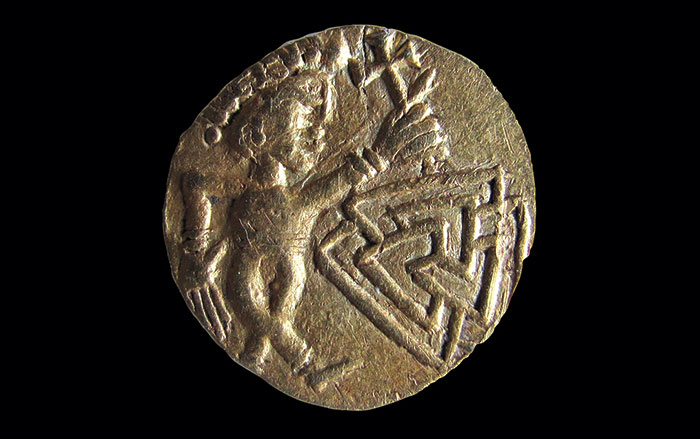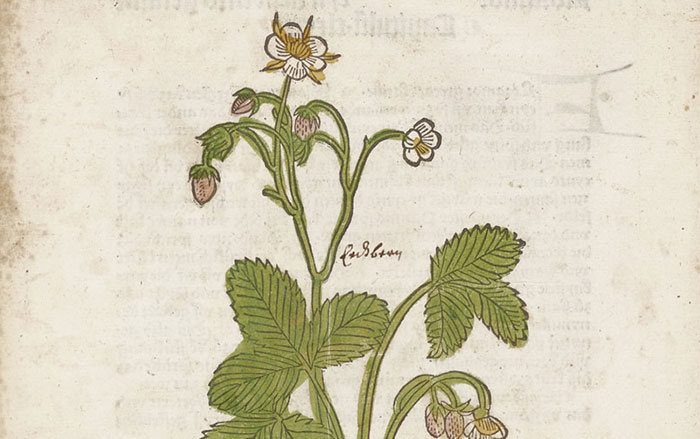
NORFOLK, ENGLAND—The Guardian reports that artifacts dating back to the Tudor period were discovered during roof repairs at eastern England’s Oxburgh Hall, which was built in the late fifteenth century by the devout Catholic Bedingfeld family. In 1559, Sir Henry Bedingfeld refused to sign the Act of Uniformity, which outlawed the Catholic Mass. As a result, the Bedingfelds were persecuted and ostracized by the Tudor court. A complete personal prayer book with a gilded leather binding, found in an attic void by a builder, may have been concealed by the family. Among debris in a rat’s nest found under floorboards in the northwest corner of the attic, archaeologist Matt Champion recovered more than 200 well-preserved pieces of textiles such as silks, satin, leather, velvet, wool, and embroidery dating to the late Tudor, Elizabethan, and early Georgian periods, and scraps of handwritten music dated to the sixteenth century. Fragments of pages from the hidden book were also found in the nest. Under the floorboards near the attic’s south-facing windows, Champion found document fragments, evidence of wax seals, and hundreds of pins, indicating that the well-lit area was used for sewing and writing in the eighteenth century. To read about the possible rediscovery of the remains of Saint Eanswythe, which went missing after Henry VIII's dissolution of Catholic monasteries, go to "ID'ing England's First Nun."










